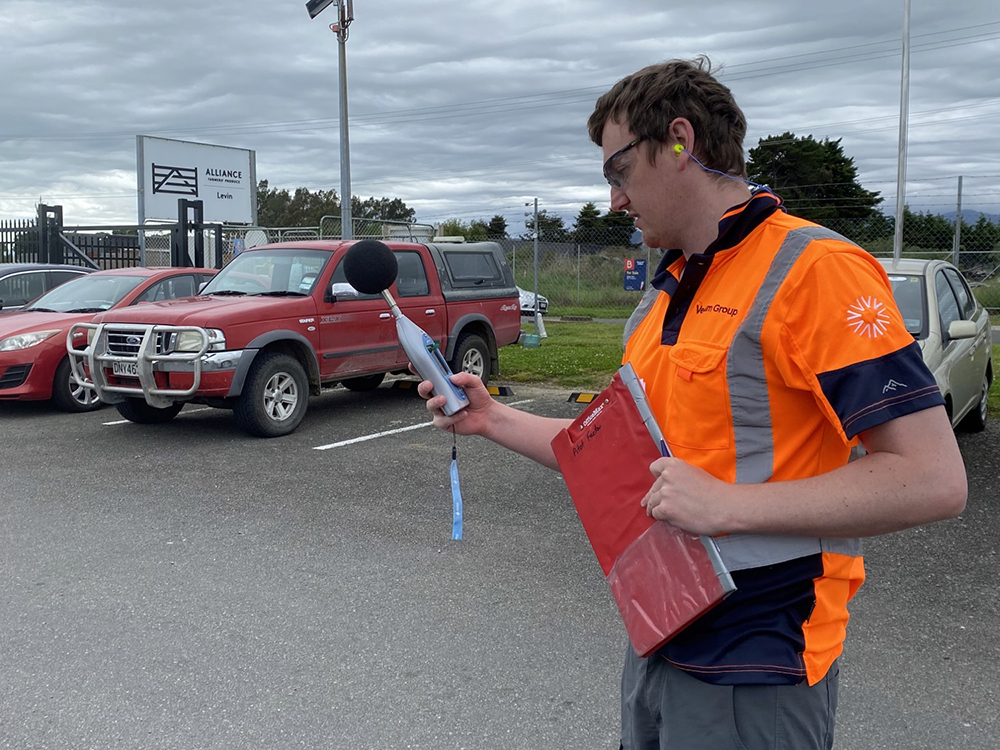Verum Group tackles occupational hygiene
Too many people in Aotearoa New Zealand die or suffer from work-related ill-health and disease. Estimates from the Ministry of Business, Innovation and Employment (MBIE) show 600 to 900 people in New Zealand die each year from work-related diseases, with thousands more suffering serious ill health.
Verum Group's senior environmental scientist and occupational hygienist William Porter.

November 2022: Too many people in Aotearoa New Zealand die or suffer from work-related ill-health and disease. Estimates from the Ministry of Business, Innovation and Employment (MBIE) show 600 to 900 people in New Zealand die each year from work-related diseases, with thousands more suffering serious ill health.
Verum Group’s Occupational Hygienist William (Billy) Porter says the problem is often insidious.
“If someone falls through a skylight, it’s a highly visible and easily categorised event. Work-place illness actually kills far more people. Work accidents kill about 50 people a year in New Zealand; you are more than six times more likely to die from a work-related disease than from an accident at work. Yet work-place disease seldom makes the news,” says Billy.
William and other Occupational Hygienists play a significant role in preventing and reducing disease in New Zealand and around the world.
“Whatever industry you’re in, there are hazards involved. Workers might be exposed to excessive noise, dust, including highly toxic fumes like welding fumes or dangerous dusts such as crystalline silica which can cause various lung diseases just to name the tip of the ice berg.
“Respiratory crystalline silica is a particular problem in a multitude of industries from quarrying, roading, construction, mining, to manufacturing. It’s found in concrete, bricks, rocks, stone, engineered stone, sand, and clay. Dust is created anytime these materials are disturbed by cutting, grinding, drilling, etc. Often the particles are extremely small. The problem is at various exposure levels it can cause silicosis, chronic obstructive pulmonary disease (COPD), and even lung cancer.
“We know there is a link, but sometimes it can take years for the diseases to manifest. It’s better to prevent or reduce exposure in the first place, than wait to see who gets sick later on.
“So basically, if it can harm you, I come in and identify the potential source of harm and suggest ways to prevent, mitigate, or eliminate the potential exposure for people. I train employees in the hazards and educate on ways to minimize exposure. Or I might be auditing existing controls to prevent ill health to make sure they actually work to protect people – both in the workplace and the surrounding community. There is no standard day in this job, every day is different with a plethora of challenges and rewarding outcomes.”
At the moment, Billy is working with clients such as Ravensdown to make sure workers there aren’t exposed to excessive amounts of noise, fumes, and dust, the previous week he was monitoring noise exposure for workers on a factory floor following crystalline silica exposure in the quarrying industry.
Billy, who already has extensive experience in Occupational Hygiene, recently became Health and Safety qualified through the New Zealand Institute of Safety Management (NZISM), adding to his qualifications from the New Zealand Occupational Hygiene Society (NZOHS) and his extensive environmental science knowledge.
For more information about Occupational Hygiene contact Billy at Verum Group: w.porter@verumgroup.co.nz or 0800 427536.